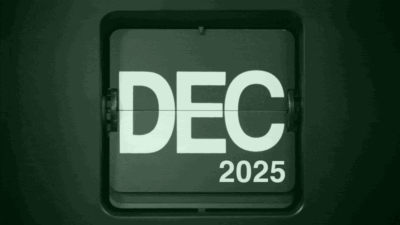Bonds Get a Bad Wrap. But They Thrived During Their ‘Great Depression’ of 2022.
Previous bond declines mean clients can now earn an expected return above inflation.

Sign up for market insights, wealth management practice essentials and industry updates.
High-quality bonds, and bond funds, just get no respect.
They’re the Rodney Dangerfield of asset classes, (although they may get more attention if stocks continue their recent plunge). After a terrible 2022 for bonds, a paper by the Retirement Income Institute argued bonds have no place in a portfolio and should be replaced by annuities. I disagreed. Comments I’ve heard on bonds go something like this:
- “I’m really weary of bonds as they have gone nowhere.”
- “Bonds just keep losing money – they aren’t a shock absorber.”
- “I don’t want bond funds, but I’ll consider individual bonds since I know I’ll get my money back.”
Yet, bonds have performed spectacularly in recent years. Just look at these annualized total returns of the world’s largest bond fund: The Vanguard Total Bond Fund (BND). Over the past five years ending last year, the total return, including dividends reinvested, declined by 0.33% annually or 1.6% in total, according to Morningstar.
Why Are Bond Losses Good?
In August 2021, the Vanguard Total Bond Fund had a 30-day SEC yield of 1.28%. One could lock in a rate likely to underperform inflation. Treasury Inflation Protected Securities (TIPS) could lock in a guaranteed 1% annual loss of spending power. Arguably, the so-called risk-free rate was a guaranteed loss. There was no way to get real (inflation adjusted) income. In hindsight, cash would have been better than bonds. The prevailing opinion was that this was a terrible time for bonds and for retirement. At that time, I was arguing that a safe spend rate for a balanced portfolio over 30 years was only about 3.3%, increasing each year for inflation.
Then came 2022, which was the worst year in the history of the bond market as measured by total return. It was the equivalent of the Great Depression for stocks. Interest rates surged and the total return of BND was a negative 13.11%. To make matters worse, stocks also fell that year by an even greater amount. Bonds have a very low correlation with stocks, but not a negative correlation. Still, bonds showed how stable they actually were compared with stocks. The 13.1% loss for bonds compares with a 65.6% loss for stocks in the worst year of the Great Depression, and a 20.4% loss for the S&P 500 in a single day known as Black Monday on October 19, 1987.
Up The Ladder. The reason that the past bond decline is great news is that suddenly we can earn an expected return above inflation. As of March 31 of this year, BND provided a 4.38% SEC yield, which is above expected inflation. If you think inflation will be high, a 10-year TIPS is yielding inflation plus 2.4%. Today, a 30-year TIPS ladder can produce a 4.7% 30-year inflation adjusted safe spend rate. Though I’m not arguing that anyone should put all or even most of a portfolio in a TIPS ladder, it illustrates why rising rates were wonderful for those looking for real income. I built a TIPS ladder for myself and am helping many clients do the same. (Sites like TIPSLADDER.com can do most of the heavy lifting.)
What’s the Opportunity Cost?
Let me be crystal clear that the following is a very common belief, but a complete myth: If you hold nominal bonds, you eliminate interest-rate risk. Here is why it’s a myth. Say at the end of 2021, you bought a 10-year Treasury bond yielding 1.52%. One year later, rates rose to 3.88%. Now you can pretend you haven’t lost a thing but you are actually getting 2.36 percentage points annually below market. You can pretend that you haven’t lost anything since you are going to get back what you paid for it but if you accidentally peeked at your account, you would see the value of that bond is down roughly 18%.
That’s the opportunity cost of earning a below-market interest rate for the next nine years. Bond funds like BND are laddered bond portfolios, and I chuckle when people tell me that a professionally managed laddered bond portfolio holding thousands of bonds has more interest-rate risk than a laddered bond portfolio of a few dozen bonds.
This doesn’t mean I’m against owning bonds directly. I’m fine with buying US government bonds with no default risk. This is especially true with TIPS since, unlike nominal bonds, one will gain a defined amount of spending power if held until maturity.
With All Due Respect. The last few years have been wonderful for high credit-quality bonds and bond funds. The bonds we own directly or through a fund will be turned over to invest in bonds yielding far more. Intermediate-term rates have declined slightly over the past year pushing the total return of BND to 4.92% for the year ended March 31, 2025. Much was erased over the past few days as rates surged again.
Suddenly bond funds are beginning to get respect. Bond ETFs have been a hot topic at industry events, where asset managers and advisors discussed fund flows into existing and new bond ETFs. If U.S. stocks continue to falter, it’s predictable that money will flow into bond funds since money chases what has done well.
Personally, the last thing I want is for bonds and bond fund prices to surge as that will mean interest rates have declined. But no one knows future intermediate- and long-term interest rates so consistency is important. Bonds are the stabilizer of our portfolios. Keep credit quality high, and don’t go long-term with the exception of TIPS held to maturity.
Whether stocks surge or plunge, bonds deserve our respect.
The views expressed in this op-ed are solely those of the author and do not necessarily reflect the opinions or policies of The Daily Upside, its editors, or any affiliated entities. Any information provided herein is for informational purposes only and should not be construed as professional advice. Readers are encouraged to seek independent advice or conduct their own research to form their own opinions.











